Liz's Letter
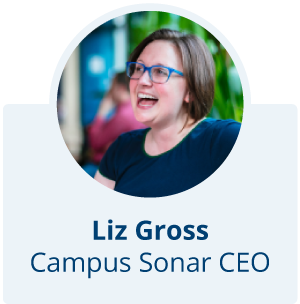
It’s 2020. When I was growing up, 2020 was a euphemism for a future when we had flying cars and robot housekeepers. I have a robot vacuum, so I guess we came close. But, higher education has evolved slower than other industries, especially in how we attract and engage with our target audiences. We can’t just wait for an eager audience to arrive at our door; like a roomba racing to the mess in the corner, we must proactively encourage and identify engagement opportunities.
To identify proactive engagement opportunities, institutions must understand the role they play in the consumer ecosystem. Your students and their families compare their experience with your institution to their experiences with airlines, clothing brands, food delivery services, and Amazon. Over the last 20 years this shift has drastically altered consumer expectations, and it’s critical that higher education catches up. We need to embrace how people search for information, understand how and when they share their experiences online, and use every available data source to provide an engaging, personalized experience from recruitment to alumni engagement.
To usher in 2020, I’d like to share three ways institutions should use technology to proactively engage students.
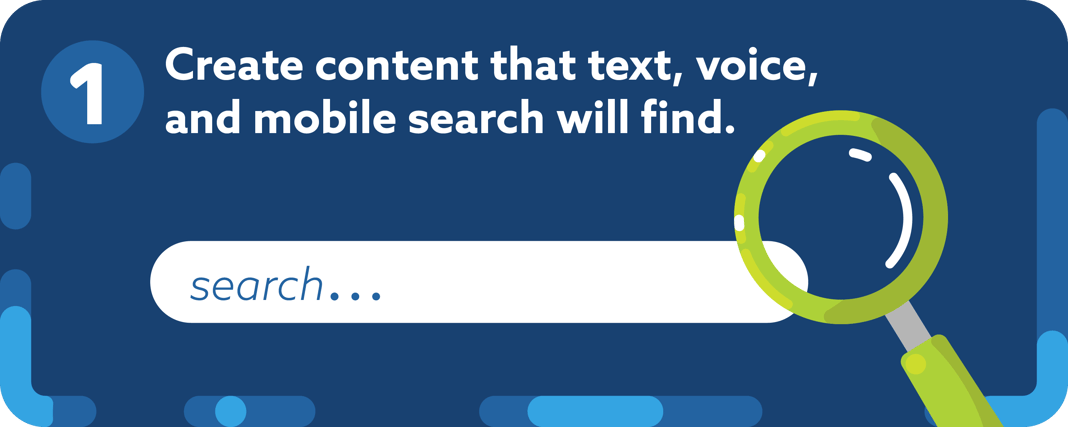
Institutions need to understand the primary way students gather information about any product or service, including college—through online search. Seventy-nine percent of students turn to search engines first to research their college options, and most of those searches don’t include the name of an institution. Rather, students search for academic majors, measures of quality, location criteria, or information about the student experience. Search may seem like old technology, but it is only increasing in importance.
Creating online content with search engines in mind (and considering innovations such as voice search) means you need to create content that answers someone’s question. Don’t think you can just be ready with an answer to a question when students ask an admissions counselor or academic advisor; chances are they won’t ask you, they’ll ask Google or Alexa. Thinking about your content this way reflects an inbound philosophy. The University of Wyoming employs this strategy, creating content like 5 Habits of Successful Online Students and The College Value Guide, and it’s working. In 2018, 60 percent of enrolled students interacted with this type of recruitment marketing content.
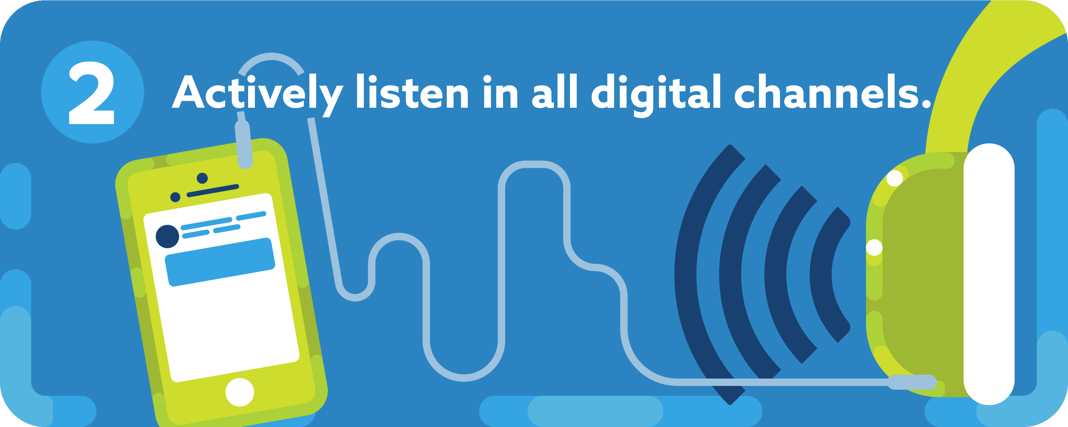
Students and alumni are on social media. Even if they’re not interacting with your campus accounts. Their use hasn’t changed much over the past two years. Research indicates that when word-of-mouth influences a purchasing decision, it’s almost as likely to occur on social media as it is offline. Nearly 40 percent of students say their enrollment decision is influenced by their social media conversations. Many of these conversations happen on public sites like Twitter, Reddit and other forums, Instagram, YouTube, and blogs.
Social listening can surface opportunities to engage with students and alumni online or offline. When online conversation data is analyzed in aggregate, you can identify themes in student or alumni conversation that impact strategic initiatives such as yield, fundraising, or alumni engagement. Boston University uses social listening to promote engagement, supported by enterprise-level software designed for this purpose.
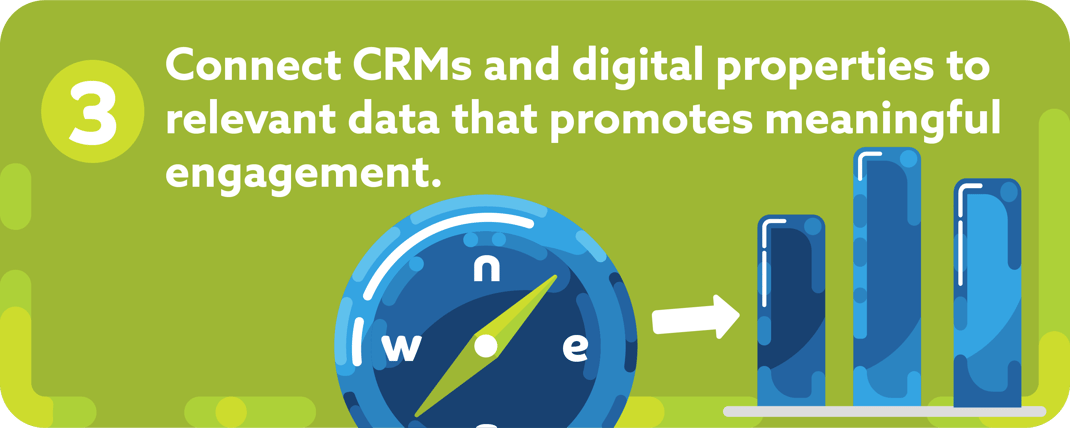
Name buy data, campus visits, email campaigns, and website browsing activity tell tiny parts of a student’s story. Connecting the dots to understand their complete story allows an institution to identify its role. While this can occur at all stages of the student lifecycle, some of the most compelling opportunities with short-term impact to institutions occur during recruitment (student search).
Building recruitment strategies around data-informed dialogue serves the dual effect of increasing engagement and offering a personalized admissions experience. Muhlenberg College and Lawrence University leverage their CRM and websites, data from name buys or inquiries, and communication prompts framed by institutional priorities to create engaging email and digital content and inform student conversations with admissions counselors. The result is an end-to-end recruitment experience that clearly demonstrates to students how their interests align with the institution’s distinctive characteristics and priorities.
These strategies may represent a departure from what you’re currently doing on campus, but they’re commonplace in other industries—and were before 2020. Airlines, hotels, and other for-profit industries are focused on maximizing revenue and profit, so it may not be natural for you to look to them for inspiration. However, they’re also setting the standard for consumer experiences, including what it’s like to engage with a brand or an organization. In 2020, higher education must leverage technology as other industries build effective, personalized experiences that result in right-fit enrolled students, graduates, and connected alumni.
Let’s build the future together.

New Research Helps You Get in Your Students' Headspace
The college admissions landscape is in a state of constant change. Our newest research can help you stay on top of the most important aspect of admissions—your students.
Our social listening research analyzed more than 124,000 conversations from prospective and admitted students to better understand their thoughts, feelings, and behaviors. The insights will help you understand students’ online conversation and behavior so you can better connect and engage with them, and also identify areas to improve your admissions process.
So download the report and watch for more to come. We'll continue sharing insights from our research throughout the year on the blog, in the newsletter, and on the socials. If you have questions or admissions stories to share, tweet us at @CampusSonar and tag #AdmissionsStories.
Get to Know Gillian
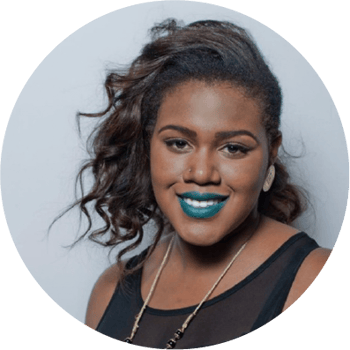 Gillian is our newest Sonarian and the third member of the marketing team. She’s a designer and painter with a love of color, the doodles in the margins, and unconventional creative solutions.
Gillian is our newest Sonarian and the third member of the marketing team. She’s a designer and painter with a love of color, the doodles in the margins, and unconventional creative solutions.
What intrigues you the most about social listening?
As a somewhat recent graduate from college, I’m reminded of the importance that student voices have on shaping their communities. There is such a high value and power in everyday conversations. And I’m excited to be in a place where I have the ability to help contribute to a healthier and happier experience for students!
What's the most memorable vacation you’ve taken in the past?
In 2015, I studied abroad in Florence, Italy. While abroad, I had the chance to take a 14-day, solo trip to a number of different countries. My favorite city to visit was Vienna, Austria. The combination of old-Baroque and Gothic architecture combined with stunning modern buildings, the variety of art museums housing some of my favorite artists' work, and the smaller cozy neighborhoods made it an incredible experience that I won’t ever forget.
What’s rocking your world this month?
Crafts! One thing I want to spend more time creating is more crafts. I recently got new knitting needles and I’ve been learning how to read knitting patterns. I also got an embroidery hoop and various colors of embroidery thread. I’m hoping to successfully create some fun patches soon!
What’s your most significant current challenge?
The mental and physical challenge of playing tennis has been a central part of my life and health since middle school, but especially over the last year, as I dedicated multiple nights a week to playing. I recently ruptured my achilles tendon at a tennis drill, and I’m now in a (very stylish) walking boot over the next couple months. It’s been hard to no longer have tennis as one of my outlets. I’m now challenged in learning new ways to spend my time and other ways in which I can be productive and happy!
What would you like to accomplish in your job this year?
This year I'd love to expand on my animation knowledge. Just like any marketing tool, animation can have a large impact on any brand. It’s recognizable, friendly, and dynamic.
What are you currently watching on Netflix?
Most recently, I’ve just finished up the tenth season of the Great British Bake Off. The judge, hosts, and contestants are all so sweet—pun intended!
What social media platform do you use most often?
My two favorite social media platforms are definitely Instagram and Pinterest. I’m a visual person, a visual learner, and someone who is inspired by visual content. I love curating various Pinterest boards of ideas to revisit later, both personal and professional.
What is the biggest impact that social has on behaviors/relationships?
I think it can be a great unifier, and also a great divider. I’ve seen so many positive things that I don’t think would have been as effective without social media: fundraisers for people who have never met, support networks for people with shared experiences, maintaining friendships that span thousands of miles. But I’ve also seen divisiveness, the spread of misinformation, and the idea that what we post on social media isn’t a reflection of who we are. I’m hoping that as we continue to use social, we revisit the basics of kindness, respect, and community.
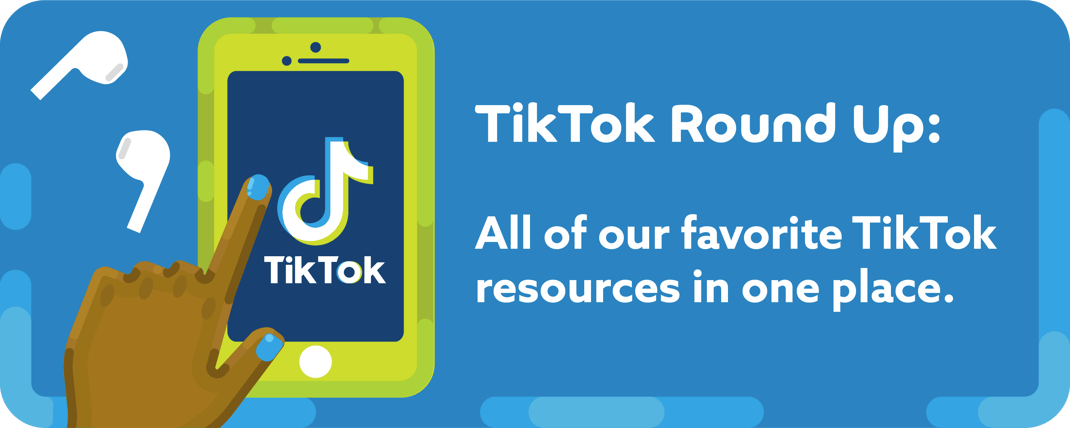
Content We're Consuming
- TikTok Is Going to College, Dr. Josie Ahlquist Blog, 7/25/19.
- How to Use TikTok for Social Listening, Brain Waves Blog, 9/11/19.
- To Reach Gen-Z Students, Colleges Meet Them Where They Are—on TikTok, The Chronicle of Higher Education, 9/11/19.
- Is Now the Time for Universities to Adopt the Video Sharing Platform TikTok? TerminalFour Blog, 9/26/19.
- TikTok: What Marketers Need to Know, Social Media Examiner, 9/27/19.
- TikTok Explained, Brain Waves Newsletter, 12/2019.
- TikTok: How Higher Ed Hits the Woah, HigherEd Live Episode, 12/2019.
- TikTok for Higher Ed: These Schools Are Getting It Right, TargetX Blog, 12/20/19.
Oops! We’re all human at Campus Sonar—making us better analysts, but still prone to the occasional mistake. Our December newsletter incorrectly listed Jess DiLuglio’s institution. She’s the Senior Social Media Specialist at the Rochester Institute of Technology.
Brain Waves Blog Posts
This month we wrote about goals and released our new admissions report. Find the posts on our blog.
See Campus Sonar
There are lots of new opportunities to see us in person in 2020! We’d love to chat with you at an upcoming conference.
Tell Us What You Think
Brain Waves newsletter is for you—help us shape it. Tell us what you think, send ideas, and let us know what would help you do your job better at info@campussonar.com. We want to know!